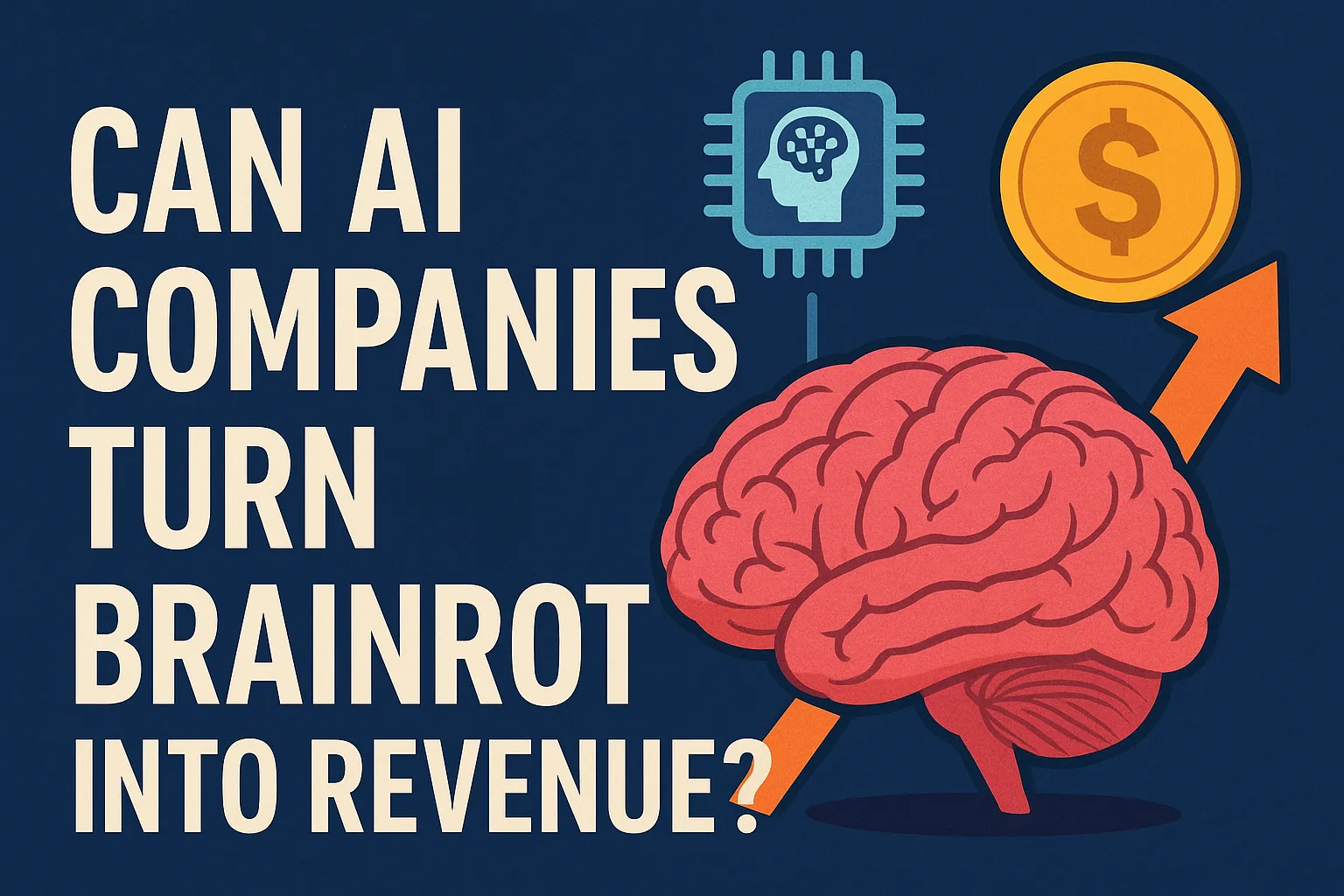Table of Contents
Can AI Companies Turn Brainrot Into Revenue? Squaredtech Explains
At Squaredtech, we track how emerging technology shifts from hype to profit. Right now, the question that dominates both tech circles and mainstream media is simple: Can AI companies turn attention-grabbing content into revenue? The term “brainrot” has become shorthand for an endless scroll of low-quality, synthetic, or attention-grabbing content, much of it generated by artificial intelligence. For some, it is entertainment. For others, it signals declining value. Either way, the phenomenon is too large for AI companies to ignore, and many are trying to monetize it.
This analysis looks at the latest moves in the AI sector, including OpenAI’s new consumer app, the rise of virtual performers, record-breaking startup funding, and even direct government involvement in private companies. Each example shows the tension between novelty and sustainability, between hype-driven adoption and lasting business models.
Read More About Our Article of Snapchat Imagine Lens: How AI Text Prompts Are Changing Creative Snaps Forever Published on September 6th, 2025 SquaredTech
OpenAI’s Sora App and the Business of AI-Generated Content
OpenAI recently launched Sora, a consumer-facing app that looks like TikTok but with a twist: every video is generated by AI. The feed is endless, the style is fast-paced, and the goal is simple to capture user’s attention. The bigger question is whether people are willing to pay for what some critics dismiss as pure “brainrot.”
From a technical standpoint, the app demonstrates OpenAI’s ability to deploy large-scale generative models in real time. Yet the challenge remains whether users see enough value to subscribe.
Key Points on Sora:
- Built to mimic TikTok with AI-generated video feeds.
- Uses generative models for fast, surreal, and meme-like content.
- Faces retention challenges because free content already floods the market.
- Tests whether consumers will pay for synthetic entertainment.
We have tested similar AI video platforms and found that novelty drives downloads, but retention depends on consistent value. If OpenAI can make AI-generated content profitable, it could set a precedent for consumer-facing AI.
Virtual Performers and the Economics of Fake Celebrities
Another sign of AI’s cultural impact is the rise of Tilly Norwood, a fully AI-generated actress who has already sparked controversy in entertainment circles. For AI companies, this shows how brainrot culture can merge with celebrity economies.
Why Virtual Celebrities Matter:
- Brands pay for reach and engagement, not authenticity.
- AI influencers never age, quit, or demand contract renegotiations.
- They offer advertisers total control over their image and actions.
- Human actors and unions see them as a threat to creative labor.
We have also covered similar cases, from CGI Instagram models to AI pop stars. The business model is clear: attention-grabbing content wrapped in a marketable identity becomes a scalable revenue stream. But it also risks public backlash if audiences feel human talent is being replaced.
Mega Funding Rounds and the Push for AI Science
While entertainment AI gets the headlines, major investors are betting on AI for science and discovery. Periodic Labs raised a $300 million seed round from Andreessen Horowitz, Jeff Bezos, and Nvidia to build AI systems that act like “scientists” and attempt to discover new physics.
Pointers on Mega Funding:
- Represents one of the largest early-stage bets in AI.
- Shows investors believe AI can accelerate scientific discovery.
- Reflects a split in AI business: consumer brainrot vs. research breakthroughs.
- Risk: inflated promises could outpace real-world results.
Our company note that history shows a cycle of hype and disappointment. Periodic Labs could become a landmark success or an expensive reminder that AI’s promise often runs ahead of its reality.
Government Equity Stakes and Strategic Control
The U.S. government is moving beyond regulation and into ownership. By taking equity stakes in companies such as Lithium Americas, MP Materials, and Intel, Washington is signaling its intent to be an active player in critical technology sectors.
Key Takeaways:
- Government is no longer just regulating but investing directly.
- Equity stakes create shared incentives between public and private interests.
- For AI startups, this could mean both greater oversight and stronger backing.
- Raises questions about how much influence governments should have over innovation.
We believe this shows AI and related technologies are now treated as strategic assets. Direct financial involvement signals that governments see both risk and opportunity in the monetization of AI-driven platforms.
Can Attention-Grabbing Content Become Sustainable Revenue?
Across entertainment, science, and policy, the central issue is sustainability. Novelty and hype can generate attention, but turning attention-grabbing content into revenue requires repeatable value.
The Path to Sustainable AI Business Models:
- Consumers must see long-term value in AI entertainment.
- Advertisers need measurable returns from AI influencers.
- Investors must fund breakthroughs that produce tangible outcomes.
- Governments may intervene as both regulators and shareholders.
At Squaredtech, we believe AI companies will keep experimenting with these models. Some may fail, some may spark backlash, and others may redefine industries. The open question remains: Can AI companies really turn attention-grabbing content into sustainable revenue, or will the hype collapse under its own weight?
Stay Updated: Artificial Intelligence


